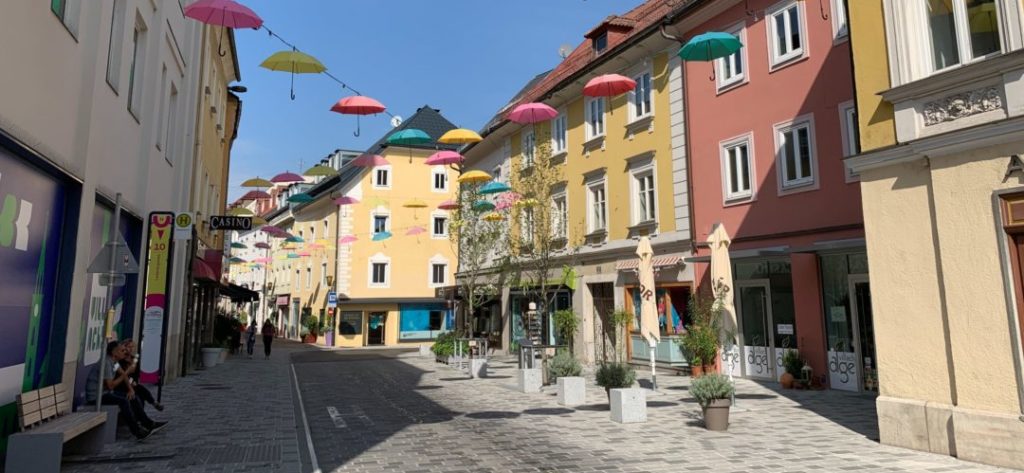Maybe you’ve heard this before: “Our destination sells itself.”
While it’s certainly true that every destination can sell itself (once people get there), it takes marketing to let visitors know why they should visit, and that takes money.
If you’re in destination marketing and tourism marketing, you might be among the folks who have to fight for your share of the tourism budget. You might also be among the high percentage of DMOs who had budget cuts over the last few years.
According to an article Tourism Does Not Sell Itself, by the American Indian Alaska Native Tourism Association in Albuquerque, New Mexico, “the travel and tourism industry generated more than $1.87 trillion in economic impact in 2019, supporting 9.2 million U.S. jobs.”
That’s a lot of money and a lot of jobs. In 2021, with travel and tourism as hot topics among all of us who have been cooped up for a year, it’s important to stress the value of tourism. Now that the United States is opening back up to travelers, continued marketing keeps your location uppermost in visitors’ minds. For example, if you stop advertising, potential tourists might forget about your location and look at others. We’ll revisit this notion a little later.
So where do you start and how do you persuade the financial folks to earmark a substantial amount for marketing?
Every DMO and Heritage Area needs funding to complete projects and attract more visitors. Our recorded webinar “Secure Funding & Demonstrate Credibility Through Marketing” can help you discover out how to get it.
Start with an Actionable Marketing Strategy
Planning often sounds overwhelming, but just take a breath and look at our tourism-specific funnel model. This quick and free read can help you build a strategy around consumer behaviors. The easy-to-follow model focuses on various members of your audience and how to turn them into destination tourists. For example, you start by making people aware of your destination. Then you show folks what makes your location stand out from others. Then you address planning needs and follow through.
In developing your strategy, you’ll take a hard look at the traveler you want to reach and what they’re looking for. You’ll more than likely have primary, secondary and tertiary audiences. Many marketers can’t afford to reach all of them, so be selective. Check out market research that considers competition, trends and more to help you narrow who to target.
We also have a webinar that gives you a more detailed look at all of these ideas, found here.

Jumpstart Funding
We put together the Ultimate Guide to Funding for DMOs
Structuring a Budget Based on the Strategy
Now it’s time to figure out what you’ll spend, why and where. There’s plenty of research on every tourist persona and how to reach them. Learn everything you can about your tourists so you know how to connect with them and others. You’ll be looking at marketing channels, content and tactics. Do they watch TV? Do they love direct mail? Catalogs? Social media? How do you find the right mix?
To move the marketing budget process forward, some expert advice can be found from DMOs with $150,000 budgets. A survey reveals that two-thirds of them allocate about half of their budgets to digital media, according to Advance Travel and Tourism.
A great guide for choosing media based on trends can be found in Allocate ad spend for each channel from Advance Travel and Tourism. It gives you a look at how digital display ads, content marketing, search engine marketing and social advertising stack up against one another and how DMOs with budgets under $50,000 allocate funds compared to DMOs with $50,000 to $450,000 budgets.
A June 1 Forbes article is also a fascinating read on how voice search with Alexa, Nest, Siri and others compares with visual searches and how both are changing the face of marketing.
Another impressive tool is video content. Forbes notes that YouTube, Instagram and TikTok short videos “are powerful storytellers.”
How to Allocate Your Marketing Budget
Knowing your audience is the best way to start your allocation process because your audience profiles help you learn potential visitor habits, and you can cater to those habits. That means digital media, email and other digital marketing plans are must haves. But make sure you follow current, and we mean current stats because they change so fast.
Phocuswire suggests prioritizing tactics by biggest impact, and in that article, Celine Chaussegros – Sojern notes “the biggest threat to destination marketing success in 2021 is outdated metrics.”
She suggests that branding will play a key role and reminds DMOs to look for co-op marketing opportunities and partnerships with other attractions.
You need to carefully analyze all advertising packages. For example, a $250 Facebook ad can easily be far more targeted and offer better reach than a $1,000 billboard. But billboards do have a place in marketing. Yet, in terms of cost, evaluate the reach and what the ROI will be. We all have to do more with less.
According to Advance Travel and Tourism, “Facebook is the must have channel for marketing budgets of all levels with 100% adoption by all respondents. But beyond Facebook, DMOs are not embracing the full spectrum of social channels.”
It’s also important to be consistent and not get caught up in tactics or events rather than strategy. Check out these resources for more information.

Smart Resources
We love sharing knowledge that empowers people to be successful.
Making It Worth the Investment
If you need some support on maintaining and increasing destination marketing funds, we’ve seen some research that indicates some western states cut marketing budgets during COVID-19, and according to an article in the Colorado Sun, the results were disastrous. Colorado and Washington suffered when they made huge cuts, while Montana took advantage of its neighbors’ short-sighted budgeting and increased its budget and “traveler spending in Montana grew 70 percent faster, and as a result took in far more travel-related tax revenue than its more populous neighbor.”
While budgeting for marketing is no easy task for DMOs, it’s an effective way to elevate your destination’s messaging. There are many resources to reference when thinking about developing an actionable marketing strategy and shaping your budget around it. No matter your goals, investing in a marketing plan is investing in your destination’s future, providing a road map to success.

Bull Moose
The star behind Bull Moose Marketing. Experienced traveler, whiskey connoisseur and selective herbivore. ? Stay tuned for my new podcast, "The Scenic Route", on cultural tourism and economic development. ?
Help Articles
The Progressive Marketer
Marketing articles for manufacturing, construction, B2B services, tourism, and other industry segments working to make their communities better places to work and live.
Your Visitors Just Want to Feel Understood
When it comes to travel, your visitors want to feel understood. Destinations that can show empathy and understanding will gain their trust and loyalty.
What Does the Metaverse Mean for Rural Destinations?
With the Metaverse making tourism headlines everywhere, it’s vital for rural DMOs and CVBs to know what this trend means for their destination.
How to Build an Authentic Brand Promise with Your Destination’s Website
It’s important to make sure the first impression, and every touch-point in between, is one that’s authentic for your DMO, CVB or cultural nonprofit. Your visitors want to know that your area is worth the visit, and that they can trust that you’re marketing an experience that will match up to expectations.
